Uh oh! New roof, same old ice dams and leaks
lesliew
18 years ago
Featured Answer
Sort by:Oldest
Comments (30)
drywall_diy_guy
18 years agolast modified: 9 years agoRelated Discussions
Roof Leak - home is 6 mos old
Comments (17)Thanks folks - Yes, we do have CO detectors, but then again, the same contractor who installed that flue also installed the CO detectors, so my confidence level isn't that high. I pushed the test button last night and it seemed to be working properly, but as far as I know, there's no way to test a detector to see if it's working to detect CO. It appears that only after several hours of being fixed, the wettest boards near the flue were beginning to dry considerably. This is good news. What's unfortunate is that it's -1 today, so I doubt much drying will take place over the next few days. We have some frost on the decking this morning. I was told that I shouldn't be too concerned about mold because by the time the attic warms up enough to promote aggressive mold growth, most of the moisture will be gone. That being said, I know it only takes a little bit of mold to be a problem. My biggest concern now is that the water seeped down our walls and we're not seeing any stains due to the sheetrock, paint, etc. Is there a way for them to easily replace the insulation in those walls and/or inspect them from the attic via flashlight ? lazygardens - yes, that's exactly what our doctor told us yesterday, too, but the fact that this problem could have explained everything we have been feeling makes me livid. I am not "sue happy" by any means, but still... Thanks for the thoughts and comments...I really appreciate them. Does anyone have any thoughts on my concern of the moisture in the walls? That's really the only major concern I have right now. I don't want to develop a mold problem in a year or two. Is there a way to cheaply test/monitor for mold (i.e. in 6 months-12 months or so?) Thanks, Brian...See MoreJust had insulation installed should I still be getting ice dams?
Comments (15)FWIW: The Grace Ice and Water Shield high snow area detail shows a strip of ice and water shield membrane wrapping past the edge of the roof and onto the vertical fascia board. The upper leading edge of the this strip is then stripped in again to tie to the i &w s membrane on the roof. The memberane should extend a minimum of 6 ft beyond the plane of the wall below the soffit. So for example, if it's 3 ft from the edge of the roof to the wall, then you should put at least 9 ft of ice and water shield on the roof. I have a realtively low pitched roof here in MA on my modest raised ranch-style house. I had a terrble ice dam problem especially at the bow window where the trim at the head of the window continued vertically up into the soffit making this "heated" space under the roof. When I re-roofed I had the contractor cover the enitre roof with ice and water shield.. I have not had any leakage since. Sometimes ice will form and there is likely a dam, but as long as the water stays out of the interior spaces. It doesn't bother me....See MoreUh-Oh! Frozen Gutters -- What To Do?
Comments (14)halds, scryn, sdello -- THANK YOU! I had to call four hardware stores before I found one that had two roof rakes left. I hurried over there and bought one; struggled to assemble the thing -- saved by arrival of our DS and his strong hands. (And our dear grandson, 9 mos. for some diversion.) The roof is raked! DH cleared more of the south-facing gutter too. We hit 35 degrees today, but now heading back to single digits. I can't express how grateful we are for the help. We will certainly rest better tonight because of your willingness to share solutions. Thanks to all who read and responded!...See MoreIce damming !! Desperate for advice 911!!!
Comments (11)Coffeemama - I’m not sure you understand the reason for the ice dams. We had ice dams this year as well with water damage too. Even with freezing temperatures, if the insulation under your roof is not adequate, the heat is escaping through the roof and melting the snow. We had a hard time finding a contractor. I had a list of 10 from Angie’s List and went down the list. Had a couple of tentative promises to come and then no shows. We finally got an appointment for 5 days after the initial water started leaking. While we were waiting for them to come, I just couldn’t watch water keep coming into the house, so we called a local hardware store where we had received reliable advice in the past. They advised us to try to rake some of the snow off that we could reach without getting on the roof. And to buy pantyhose and calcium chloride and fill the stockings with that and place along the gutters on the ice. We called a family member to come and help, who advised that we get a ladder ‘stabilizer’ to add safety to putting the ladder against the house. They were able to get up to the gutters and using a roof rake pull off some of the snow they could reach and place the calcium filled stockings. This stopped the water from coming in and it stayed that way until the roofers came and got up on the roof and took all the snow off and knocked back some of the ice on the gutters. This was on the back of our cape that has a dormer on the back, so the roof is two stories high. In the front where the roofline is only one story high, my DH and son spent 5 hours pouring hot water on all the ice along the gutters in the front. It is a two person job, one person on the ladder, one ferrying the hot water pitchers back and forth. It did work though. Completely cleared the gutter in the front of ice. We could have done the same thing in the back, which is what we would have done if the calcium filled stockings had not done the trick. We've had to stay on top of it and keep getting the snow off the roof and take care of too much ice on the gutters. If I were you, I would call my home insurance policy holder and ask them to advise. They certainly don’t want you to continue to get water into your home and might have access to qualified contractors....See Moresdello
18 years agolast modified: 9 years agolesliew
18 years agolast modified: 9 years agosdello
18 years agolast modified: 9 years agobrickeyee
18 years agolast modified: 9 years agoMongoCT
18 years agolast modified: 9 years agolesliew
18 years agolast modified: 9 years agobrickeyee
18 years agolast modified: 9 years agodon_butler
18 years agolast modified: 9 years agosdello
18 years agolast modified: 9 years agowheely_boy
18 years agolast modified: 9 years agobrickeyee
18 years agolast modified: 9 years agosdello
18 years agolast modified: 9 years agolesliew
18 years agolast modified: 9 years agolesliew
18 years agolast modified: 9 years agosierraeast
18 years agolast modified: 9 years agosue36
18 years agolast modified: 9 years agobrickeyee
18 years agolast modified: 9 years agosdello
18 years agolast modified: 9 years agonor_easter
18 years agolast modified: 9 years agobrickeyee
18 years agolast modified: 9 years agosue36
18 years agolast modified: 9 years agobrickeyee
18 years agolast modified: 9 years agosue36
18 years agolast modified: 9 years agobrickeyee
18 years agolast modified: 9 years agosue36
18 years agolast modified: 9 years agosdello
18 years agolast modified: 9 years agobrickeyee
18 years agolast modified: 9 years agolesliew
18 years agolast modified: 9 years ago
Related Stories

MOST POPULAR15 Remodeling ‘Uh-Oh’ Moments to Learn From
The road to successful design is paved with disaster stories. What’s yours?
Full Story
LAUNDRY ROOMSSoak Up Ideas From 3 Smart Laundry Rooms
We look at the designers’ secrets, ‘uh-oh’ moments and nitty-gritty details of 3 great laundry rooms uploaded to Houzz this week
Full Story
ROOFSWhat to Know Before Selecting Your Home’s Roofing Material
Understanding the various roofing options can help you make an informed choice
Full Story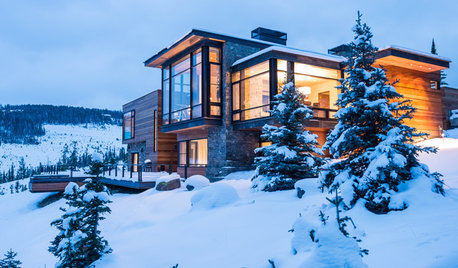
ARCHITECTUREHave Your Flat Roof and Your Snow Too
Laboring under the delusion that flat roofs are leaky, expensive and a pain to maintain? Find out the truth here
Full Story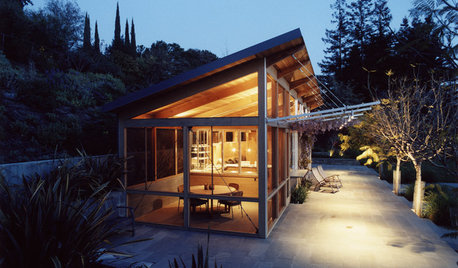
ARCHITECTUREDesign Workshop: The Shed Roof
This popular — and versatile — form straddles the divide between contemporary and traditional styles
Full Story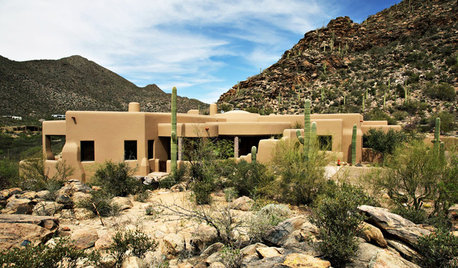
TRADITIONAL ARCHITECTURERoots of Style: Pueblo Revival Architecture Welcomes Modern Life
Centuries-old details of adobe construction still appeal in the desert Southwest, adapted to today's tastes
Full Story
HOUZZ TVHouzz TV: How to Install a Rain Barrel
This DIY tutorial shows how easy it can be to capture rainwater from your roof to use in your garden later
Full Story
DISASTER PREP & RECOVERYRemodeling After Water Damage: Tips From a Homeowner Who Did It
Learn the crucial steps and coping mechanisms that can help when flooding strikes your home
Full Story
LIFEHard Winter? 9 Ways to Battle Cabin Fever
We know a lot of you are trapped where it just won’t stop snowing. Here are some ways to survive
Full Story
ARCHITECTURE15 Smart Design Choices for Cold Climates
Keep your home safe and comfortable in winter by choosing the right home features and systems
Full StorySponsored
Zanesville's Most Skilled & Knowledgeable Home Improvement Specialists



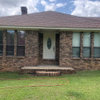
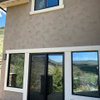


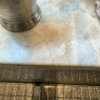
mike1122